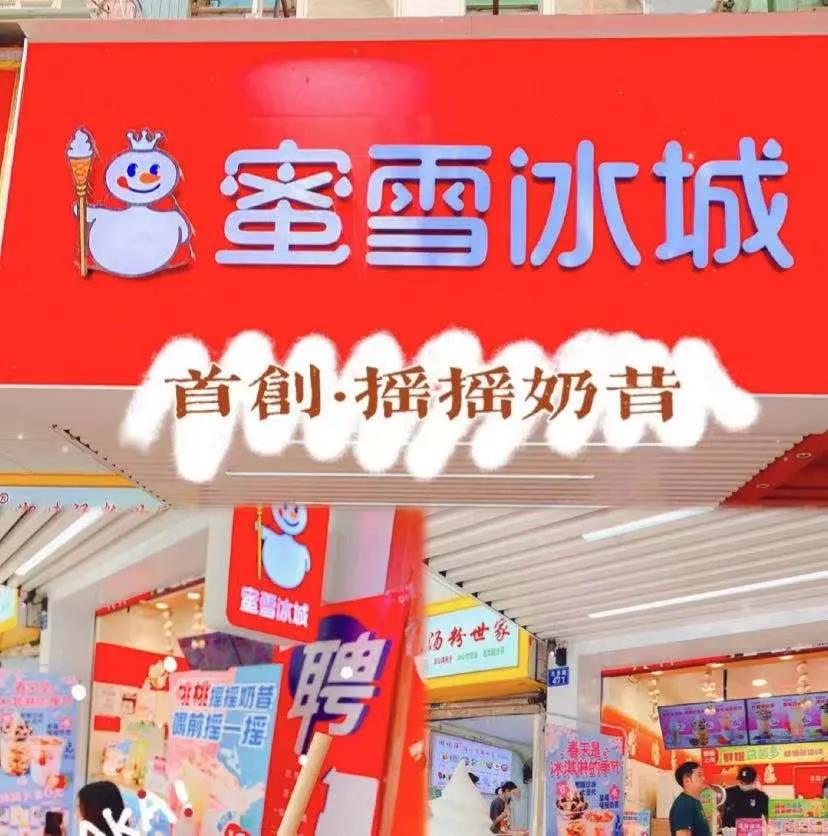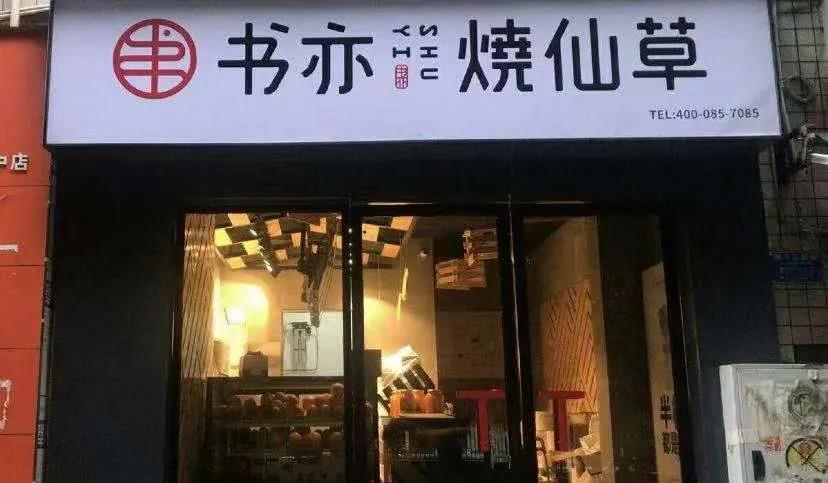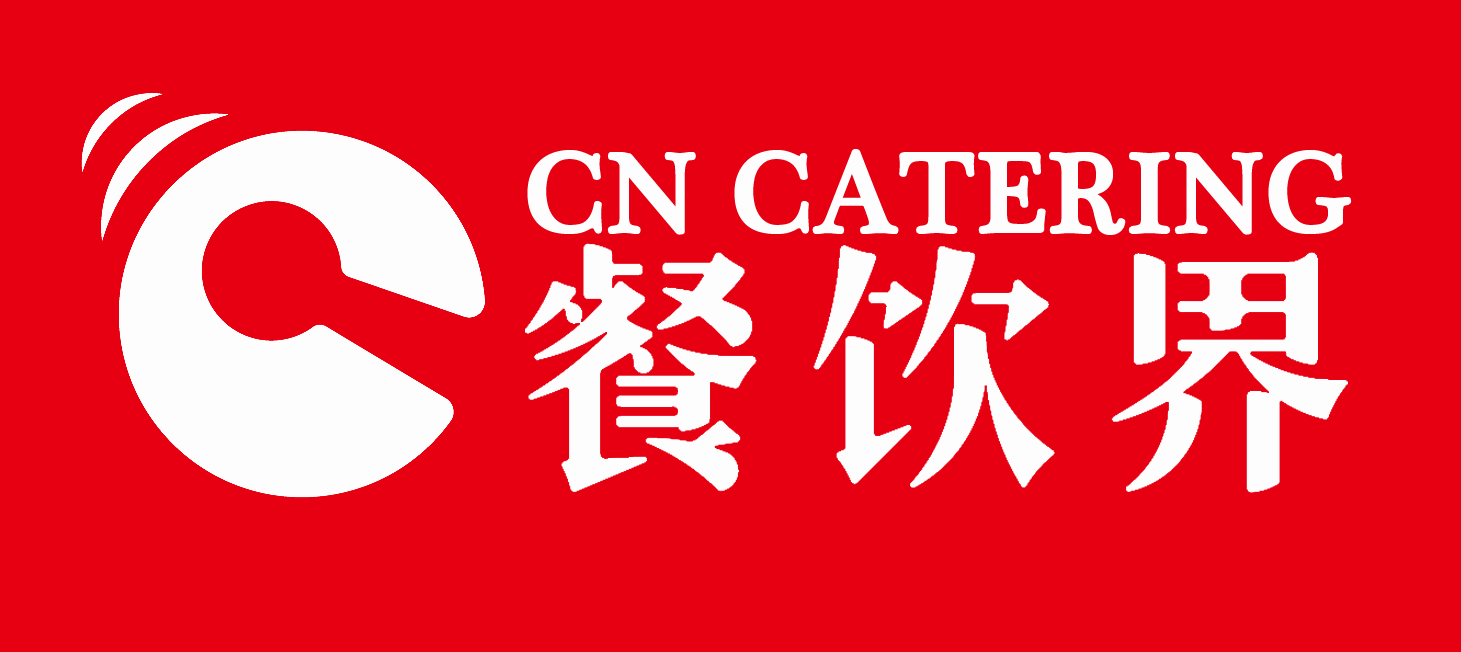Is the catering brand sinking, is it a nugget or a pit? |MarketToday's headlines

Since two or three years ago, many first-tier brands have begun to sink in third- and fourth-tier cities, driving consumption upgrades and customer orders in the sinking market. This year, I went back to my hometown to inspect the catering market and found several interesting phenomena: the crazy invasion of milk tea and hot pot, brand melee, and personal combat; local brands make money in silence, and there are dozens to hundreds of direct-operated stores; first-line brands Quicken the pace to sink, and quickly opened a few stores, but the strong dragon can hardly crush the snake.
This time I returned to my hometown and witnessed the crazy invasion of the sinking brand. While seeing the market opportunities, I also saw the fierce competition in catering. Perhaps only by truly integrating into the sinking market can we appreciate the way. In the past few years, everyone said that they would turn their attention to the sinking market, but after seeing the true status of the sinking market, the author must explain to you the opportunities and reality of the sinking market.
ONE
Sinking the market, there is big business
The sinking of the market is no longer a new concept and outlet, and it has become a cliché of the insiders.
How big is the sinking market?
Excluding the 390 million people in Tier 1 and Tier 2 cities, the population of cities, counties, towns, and rural areas below Tier 3 is close to 1 billion. This is a number three times more than the total population of the United States.

1. They understand sinking markets better than anyone
In 2000, Chen Chuanwu opened the first Zhengxin Chicken Chop in Wenzhou, Zhejiang. I used to make a fortune with a quick-freezing agent, but after a long time, I found that the industry was in arrears with a serious payment, so I opened a restaurant, and this move was just a helpless move to withdraw funds. In the year when Zhengxin Chicken Chop was first opened, "Fahrenheit Brothers" managed to make up 80,000 yuan to create a master restaurant in Fuzhou Normal University, and also took a very foreign name "Wallace".
At that time, Zhang Chaohong rented a small store of 20 square meters in Zhengzhou and upgraded the shaved ice stall that he used to spend 3,000 yuan to upgrade to the "Michelle Ice City." He runs a small shop and can earn thousands of yuan a month, so he can support himself, but the shaved ice is limited by the season, and he can only do it for a few months a year. He had no work in his free time, so he had no choice but to find a job on his own. He also worked as a Chinese restaurant a few years ago. It was not until 2006 that he found the "Rainbow Hat" ice cream shop on the streets of Zhengzhou, found its packaging bag, studied the ingredients of the ice cream, bought the raw materials himself, and sold it at a low price of 1 yuan. This completely changed his drift. Life.
No one could have imagined that, 20 years later, Zhengxin Chicken Chop started from the East China Market and entered 500 cities across the country, with more than 20,000 stores, "exploding" into the sinking market. Wallace ran all the way, developing 16,770 stores nationwide, with revenue of over 2.55 billion yuan in 2019, and successfully counterattacked KFC McDonald's.
Michelle Ice City opened tens of thousands of stores with a cup of milk tea worth less than 10 yuan and sold 6.5 billion yuan a year, making it the largest tea chain brand in China. These sinking brands can be seen everywhere in the author's hometown, and the brand density is beyond the phenomenon. You can see one across a street or two, and it is not surprising that there are 1-2 in popular business districts.
These catering brands have a common feature. They have their own unique vision and style of operation in the sinking market. In the catering industry, they know the sinking market better than anyone else, and they are well-deserved "king of sinking". . If it were placed 20 years ago, when China's market economy had not yet fully awakened, who would have discovered the sinking market to this "gold mine".
But smart entrepreneurs are always good at finding opportunities, knowing how to judge the situation, and follow the trend.
2. A sinking market with 1 billion people
It is no secret that there are boundless opportunities in the sinking market. Judging from the scale of these "king of sinking" thousands of stores and 10,000 stores, it can be seen that the sinking market is indeed very large, or even larger. However, no one in the catering industry can really clearly define the sinking market, most of which are concepts in the cloud.
According to a research report by Guotai Junan Securities, excluding the 390 million people in Tier 1 and Tier 2 cities, the population of cities, counties and rural areas below Tier 3 is nearly 1 billion, and the total area of Tier 1 cities only accounts for 3% of China's total land area. In China, nearly 1 billion people still live in third-, fourth- and fifth-tier cities.
3. Youth in small towns with leisure and money
The rise of the concept of sinking market has also made the unique group of young people in the small town known to the public. The market’s definition of “small town youth” is a group born in the 1980s and 1990s, usually living in relatively affluent third- and fourth-tier cities, returnees from small towns, and local youths in small towns. They also have one group. A decent job.
In layman's terms, it means having money and leisure.
According to data from Tencent Marketing Insight, 83% of new youth families in small towns own real estate and 67% of new youth families in small towns own cars, with an average monthly disposable income of RMB 3,730. Young people in these small towns have houses and no loans. From 9 to 5, work pressure and living costs are lower than those in first- and second-tier cities. This means that they have money and leisure, and they can release more at a lower cost of living. Consumption motivation.
Moreover, there are many opportunities in third- and fourth-tier cities. At the same time, there are gaps in rent and labor compared with first- and second-tier cities. These advantages are undeniable. It can be seen that the sinking market is a huge consumer market with vigorous consumption power. Speaking of this, everyone seems to have foreseen that the sinking market is a neglected "gold mine", but the sinking market is definitely not a piece of fat, and it is not necessarily easy to do business.
TWO
Recognize the four truths of the sinking market
Back in my hometown, I wandered in Wanda with my friends. There are more than 30 beverage shops in the mall and Jinjie. The top brand Xicha Naixue sank, and the franchised brands such as Michelle Ice City, Shuyishaoxiancao and Yihetang fought, and the local milk tea brands such as Cuichashi and Liang Xiaotang also came to share their cups.

In a small shopping mall, the actual situation of nearly 30 stores is that consumers of popular tea brands and cost-effective tea brands are constantly coming and going, and some beverage stores have quiet business. The business is polarized.
In this way, is it really as easy to do business in the sinking market as you think?
Truth 1: The money that sinks the market is not so profitable
If, as mentioned above, the sinking market has a population of nearly 1 billion, then there is no doubt that the sinking market is indeed very broad and the opportunities are endless. But in fact, not all catering businesses in Tier 3 and below cities, counties and towns can make money. Because the core factors to measure whether a sinking market can make money are the urban population base and purchasing power.
① The essence of business is flow
To do business in the sinking market, you must first observe the population movement in the city where you live. Because the population of "small places" is not as dense as that of large cities, this means that the sinking market is a stock market, a business of doing acquaintances. This also directly leads to a result, big cities fight for traffic, small cities fight for repurchase. The stock market is tantamount to fierce competition, and at the same time, high repurchase must be done to bring sustained profits.
For example, if the permanent population of a third-tier city, county or township has shown a net outflow trend in recent years, young consumer groups will all work and live in a few metropolitan areas or in strong cities in the province. This may mean that the population of this low-tier city is shrinking, and the city's consumption vitality is insufficient.
Unlike first- and second-tier cities, third- and fourth-tier cities are less densely populated, so most brands compete for the stock market, so the repurchase rate is an extremely important indicator, which is also a key factor for many big-name chains to fail to survive in the sinking market .
② Purchasing power determines consumption power
First, let's outline the user portrait of the sinking market. Although young people in small towns have money and leisure, they are not as capable of spending as imagined. In the words of the investment director of Suning Eco-Chain Fund: The income of this group is generally between 2,000 to 3,000 yuan per capita, and is generally based on household consumption, while enjoying the leisure time that exceeds that of people in first-tier cities.
"Glass King" Cao Dewang once said: Among my country's 1.4 billion population, only 200 million people have actual consumption capacity. Last year, Premier Li Keqiang also stated that there are 600 million people in China with a monthly income of only 1,000 yuan. This set of data makes us soberly aware of the consumption power of the sinking market.
Although our country has a large population and a huge demographic dividend, not everyone is willing to pay a large amount for catering, and not all sinking markets are sweet and pastry.
Truth 2: The price per capita has a ceiling
The theorem that everyone knows, the lower the city level, the higher the consumer's sensitivity to prices, even in the top 100 counties.
First, no matter what product category, the price of sinking market has a ceiling.
On the menu of Michelle Ice City, most of the products have a unit price of no more than 10 yuan, and the price of Yihetang, a tea brand in the sinking market in South China, is the same. They have firmly captured the large number of consumers in the sinking market with high quality and low price positioning, thus forming a strong brand barrier.
We can see Wallace in many towns and villages that McDonald's and KFC are reluctant to visit. Why can he be loved by young people in the sinking market?
Because it's cheap.
For the same ten dollars, you can only buy a box of French fries at KFC, but you can get a burger in Wallace, and the burger taste is not bad. It is precisely the low price that has become Wallace’s core competitiveness. The same goes for Zhengxin Chicken Chop. All products are sold at less than RMB 12, which is closer to the psychological price of consumers in tier 3-5 cities. So when some big names sink, the per capita price is a hurdle. Just like Haidilao, the price is used in 1-2 tier cities to 3-5 tier cities, and consumers who have finished their tastes directly call the price higher.
After all, in low-tier cities, a cost-effective hot pot meal is only 60-80 yuan, and there are even small self-service hot pots that are lower per capita. In contrast, Haidilao’s per capita is considered expensive, so Haidilao was hit in the sinking market. Many labels such as "expensive" and "small quantity".
Second, even if the brand sinks into the market with low prices, without the support of a strong supply chain, sinking is undoubtedly a dead end. It seems that rent and labor are cheap in 3-5 line "small places", but the sales volume can't rise, the cost can't be controlled, and the price has a ceiling, which may not necessarily make a lot of money.
Michelle Ice City and Zhengxin Chicken Chop can stand in the sinking market. The number of franchise stores continues to grow. Relying on the strong supply chain behind them, they have strong bargaining power due to the huge purchase volume. Form a low-cost moat.
Truth 3: Sinking is not just copying first-line brands
Most people see that a certain project in first-tier cities is good, or first-tier brand channels are sinking, and think that directly moving the inherent models of first- and second-tier cities to lower-tier cities or small counties can achieve the effect of dimensionality reduction.
If it were that easy, there wouldn't be so many brand discounts. It is not easy for catering brands in first- and second-tier cities to survive, and third- and fourth-tier cities also have their own dilemmas.
Take CoCo’s menu as an example. In first- and second-tier cities, its main menu is about 16 yuan per capita products, while in third- and fourth-tier cities, products with a per capita value of about 10 yuan are placed first.
Even CoCo's sinking store decoration can be comparable to a coffee shop, and it can completely steal the coffee shop market. This is a very typical behavior of differentiation.
Although Haidilao’s sinking strategy is intended to drive the growth of the performance market, it is not long-term optimistic in the eyes of investors. IFC analysts have pointed out: The habit of people in third- and fourth-tier cities to consume Haidilao is based on party-oriented early adopters, rather than the daily dining scene of small and medium-sized tables in first- and second-tier cities. Therefore, Haidilao is not optimistic about the future of Haidilao. The performance of third- and fourth-tier cities.
Here is an example. For mass catering in first-tier cities, the location of the restaurant is mostly set for two or four tables. Although it seems that the location is too small to meet the needs of the party, in fact the restaurant is still at most 2-3 people. . For mass catering in third- and fourth-tier cities, the proportion of small tables in restaurants will be relatively reduced, but more round tables or boxes will be added.
It can be seen from this that the first-tier cities are dominated by small families and friends gathering for daily meals, while the third- and fourth-tier cities are dominated by family gatherings and friends gatherings. This is the essential difference. Therefore, when a brand enters tier 3-5 cities, the most important thing is to adapt measures to local conditions, and first-tier brands usually create corresponding sub-brands for lower-tier markets, such as KFC's small-town model store, and Heycha's Heyxiaocha is the reason.
Summary
Although there are not many chain brands in the sinking market, there is still a very wide range of development space, but the current situation is not as optimistic as in previous years. After all, many top brands are eyeing this piece of "fat".
There is a big market in the sinking market, but it is also a slow business. Entrepreneurship in the sinking market is a protracted battle. The sinking of the market was created, but how to seize market opportunities is still something that needs to be studied vigorously.
免责声明:1.餐饮界遵循行业规范,转载的稿件都会明确标注作者和来源;2.餐饮界的原创文章,请转载时务必注明文章作者和"来源:餐饮界www.canyinj.com",不尊重原创的行为餐饮界或将追究责任;3.投稿请加小编微信toutiaoxiansheng或QQ1499596415。4.餐饮界提供的资料部分来源网络,仅供用户免费查阅,但我们无法确保信息的完整性、即时性和有效性,若网站在使用过程中产生的侵权、延误、不准确、错误和遗漏等问题,请及时联系处理,我们不承担任何责任。
 扫码关注餐饮界微信号
扫码关注餐饮界微信号


 Media
Media


